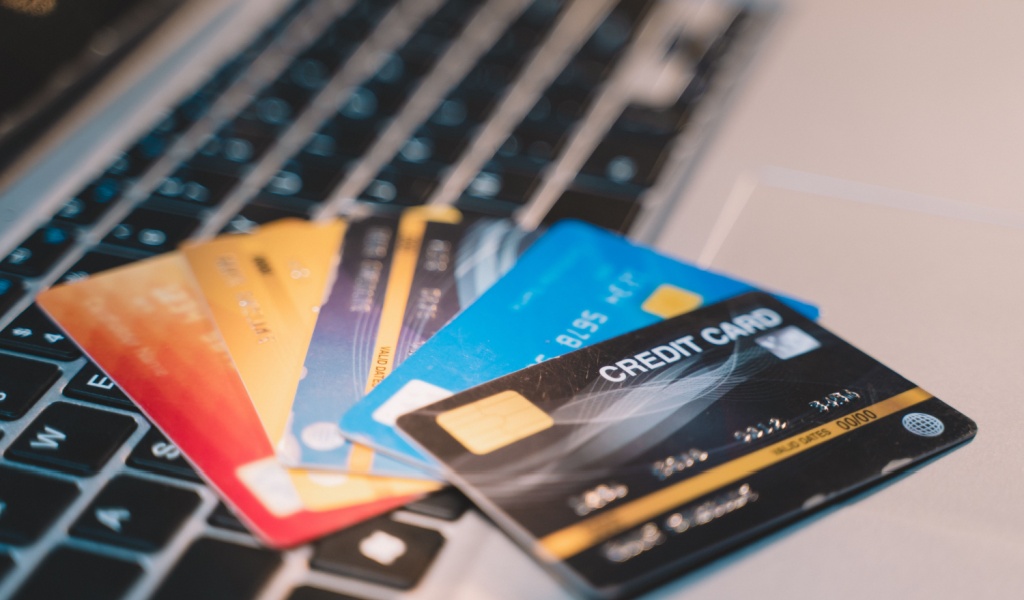The credit card sector is rapidly evolving due to the digital revolution transforming industries. Progress in technology, shifts in customer behavior, and growing demands for safety, convenience, and sustainability are all reforming the future of credit cards. The cards we currently use will soon become more digital, combined with other financial tools, and tailored to our specific requirements. Let’s look at the major trends that could impact the future of credit cards.

The Growth of Digital and Contactless Payments
One of the main changes in the credit card industry is the transition to digital payments and contactless technology. Previously, physical cards were mandatory for making transactions, but smartphones, smartwatches, and wearables are currently replacing them. Digital wallets such as Google Pay, Apple Pay, and Samsung Pay allow users to store several cards and make payments with a single tap of their device.
This movement is anticipated to expand even further. As contactless payments become more common, paying for goods and services in the future will be quicker and easier. This transition also offers more security, as digital wallets frequently include biometric authentication, like fingerprint scanning or facial recognition, lowering the necessity to carry physical cards. According to research, credit cards will gradually be included in many digital platforms, resulting in a more connected and successful payment experience.
Higher Link with Financial Tools
The future of credit cards may involve more integration with other financial tools. As neobanks and fintech platforms become prevalent, customers are pursuing a more consistent financial experience. Credit cards will gradually be connected to saving tools, budgeting applications, and even investment platforms, creating a smooth and complete method of handling finances.
For example, future credit card applications might provide features such as programmed expense categorization, savings tools, and even financial planning guidance, all through the same application. This combination will make it convenient for customers to handle their spending, monitor their savings objectives, and get customized financial guidance. As the digital financial ecosystem continues to expand, credit cards will play a key role in linking all facets of personal finance.
Biometric Authentication for Higher Security
As digital payments become more widespread, security remains a main concern. Conventional techniques such as PINs and signs replace safe choices, particularly biometric authentication. This technology, which consists of fingerprint scanning, voice recognition, and facial recognition, guarantees that only the cardholder can approve a transaction.
Biometric credit cards are now being created by businesses such as Visa, which is working on cards with built-in fingerprint scanners. This technology claims to decrease fraud drastically since it’s almost impossible for fraudsters to recreate somebody’s biometric information. The extensive acceptance of biometric authentication will offer both safety and user experience, as cardholders will no longer need to memorize PINs or passwords.
Highly Customized Rewards Programs
Loyalty and reward schemes are a significant element of credit cards; however, the upcoming models of these programs will be highly customized. AI and data analytics will help businesses provide hyper-targeted incentives depending on customer spending behaviors. Instead of getting general rewards for categories such as dining or shopping, users will get tailored offers based on their unique preferences.
For instance, frequent travelers may obtain bonus points for flights or hotel reservations, while tech fans may get rewards for electronics. The bonuses might even be seasonal, providing discounts or added points in peak shopping times of the year. This degree of customization might make reward schemes more valued while motivating consumers to use their cards more often.

Artificial Intelligence and Machine Learning (Smarter Credit Cards)
Artificial Intelligence (AI) and machine learning are causing turmoil in the credit card sector. These technologies let credit card businesses evaluate huge volumes of data while assisting in recognizing patterns, predicting customer behavior, and providing more customized services.
In the future, credit cards might leverage AI to offer personalized recommendations, more rewards, and personalized credit limits depending on spending patterns. For example, AI could detect when you’re about to make a big purchase and temporarily pre-approve you for a greater spending limit. This would offer flexibility and convenience to customers while preventing unpleasant denials at checkout.
AI can also assist in scam prevention by detecting doubtful transactions in real time, making it difficult for fraudsters to take advantage of the system. The use of AI in fraud discovery is already being executed, and as these algorithms improve, we can anticipate even higher security against identity theft and unauthorized charges!
Cryptocurrency Integration
As cryptocurrencies such as Bitcoin and Ethereum continue to rise in fame, the probability of having crypto-enabled credit cards is becoming a reality. Certain credit card companies already provide cards that let customers earn rewards in the form of virtual money. For example, crypto rewards cards allow users to collect cryptocurrency instead of conventional points or cashback.
Blockchain, a system that powers cryptocurrencies, could also provide credit card safety. With its dispersed and clear nature, blockchain provides an extra layer of security against fraud and could simplify transactions. Credit cards might permit direct crypto payments in the future, giving customers more suppleness in spending their finances.
Transition to a Cashless Culture
As digital payments become more prevalent, the world is heading toward a cashless society. Contactless payments, mobile applications, and digital wallets are already reducing the necessity of physical money or credit cards. Many nations have already started embracing cashless systems.
In a cashless era, credit cards will become complete digital tools available only on smartphones, smartwatches, and other linked devices. This move will bring more convenience, protection, and swiftness to daily transactions, making payments easier than ever before. With fewer physical cards and no requirement to carry money, payments in the future will be made primarily online.
The Drive for Sustainability
Sustainability is a rising concern, and the credit card sector is beginning to embrace it! Since plastic credit cards contribute to environmental waste, many providers seek more environmentally friendly alternatives. Certain businesses are making cards from recycled plastic, green materials, and even compostable elements.
Moreover, certain credit cards allow consumers to offset carbon emissions via purchases. For instance, cards like those from Aspiration plant trees with every transaction, encouraging customers to make a positive environmental impact. As customers gradually prioritize sustainability, credit card businesses may adopt eco-friendly procedures to meet this growing demand.
Are You Excited About the Future?
The future of credit cards is expected to be much easier, safer, and customized to individual requirements. With the growth of digital payments, biometric authentication, sustainability, AI-driven personalization, and cryptocurrency integration, the future credit cards will be very different from the ones we use today.
As we shift toward a cashless society and adopt a more digital-first method, credit cards will be more than just a tool for making purchases; they’ll be an essential component of a complete financial ecosystem. By emphasizing tailored rewards, protection, and eco-friendly methods, future credit cards will be more user-friendly and provide a better experience for customers around the world. Credit cards have a bright future, and the improvements have only just begun!



